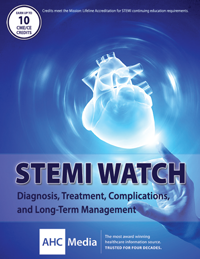Outpatient Quality Indicators Haven’t Improved Much Since Beginning of Century
November 18th, 2016
BOSTON — Patient experience appears to have improved, but outpatient quality of care didn’t change much between 2002 to 2013, despite local, regional, and national efforts to improve deficits in the nation’s health delivery system.
That’s according to a new report in JAMA Internal Medicine which describes changes in quality measures based on the Medical Expenditure Panel Survey (MEPS).
For the Brigham and Women's Hospital and Harvard Medical School-led study, researchers measured 46 indicators of the quality of outpatient care of adults over that decade, focusing on the areas of recommended care, inappropriate care, and patient experience.
The nine clinical quality composites included five "underuse" composites such as recommended medical treatment, and four "overuse" composites such as avoidance of inappropriate imaging, which were based on 39 quality measures. Overall patient experience rating and two patient experience composites — physician communication and access — were based on six measures.
Background information in the articles notes that the U.S. population became slightly older during the study period — average age increased from 45 to 47 — as well as less white, more Hispanic, more likely to have graduated from college, and less likely to smoke cigarettes. In addition, while in 2002 8% of Americans had three or more chronic diseases, the percentage had risen to 18% by 2013.
Despite that, results indicate that the following four clinical quality composites improved:
- recommended medical treatment, from 36% to 42%,
- recommended counseling, from 43% to 50%,
- recommended cancer screening from 73% to 75%, and
- avoidance of inappropriate cancer screening from 47% to 51%.
At the same time, two clinical quality composites were found to have worsened: avoidance of inappropriate medical treatments, from 92% to 89%, and avoidance of inappropriate antibiotic use, from 50% to 44%.
Recommended diagnostic and preventive testing (76%), recommended diabetes care (68%), and inappropriate imaging avoidance (90%) were three clinical quality measures that showed no change, according to the review.
On the other hand, patients were overall more satisfied. Results indicate the proportion giving high ratings went up:
- from 72% to 77% for overall care,
- from 55% to 63% for physician communication, and
- from 48% to 58% for access to care.
"Despite more than a decade of efforts to improve the quality of healthcare in the United States, the quality of outpatient care delivered to adults has not consistently improved,” study authors wrote. “There have been improvements in patient experience. Current deficits in care continue to pose serious hazards to the health of the American public in the form of missed care opportunities as well as waste and potential harm from overuse. Ongoing national efforts to measure and improve the quality of outpatient care should continue, with a renewed focus on identifying and disseminating successful improvement strategies.”

FEATURED RESOURCE


